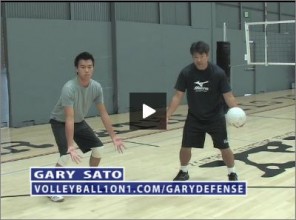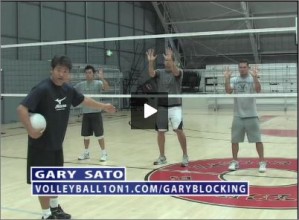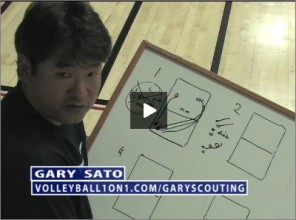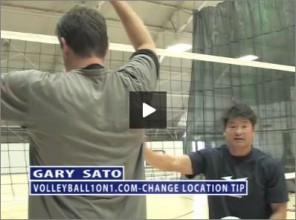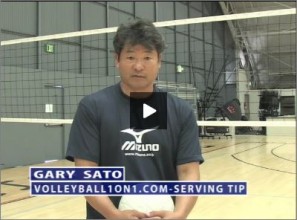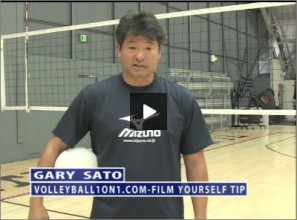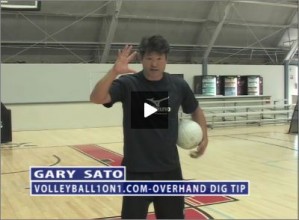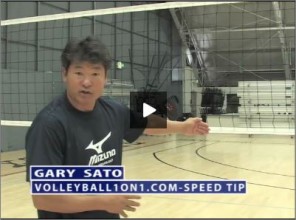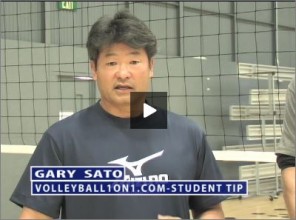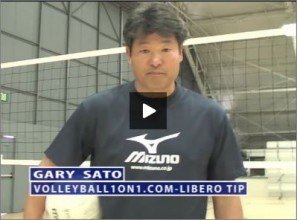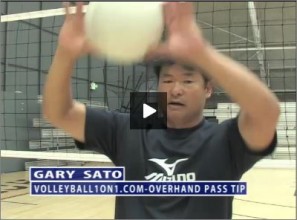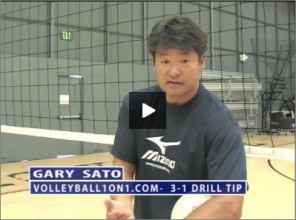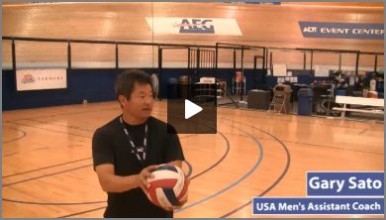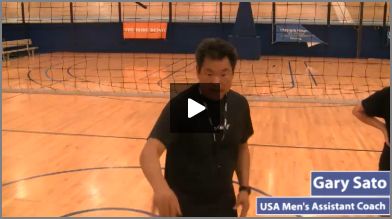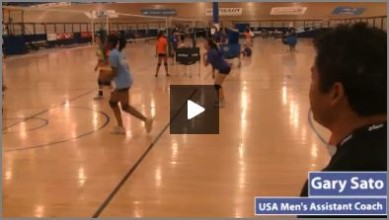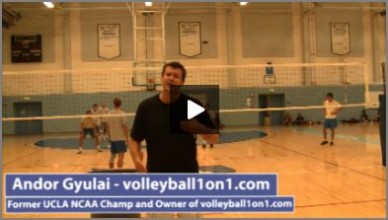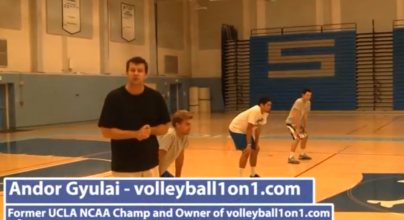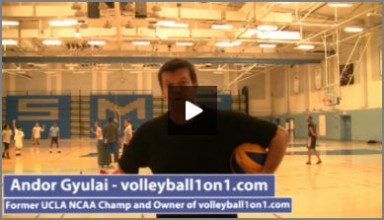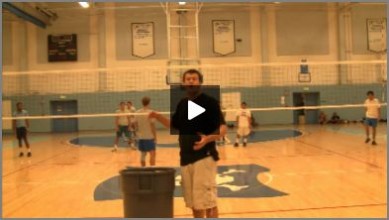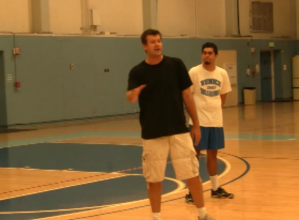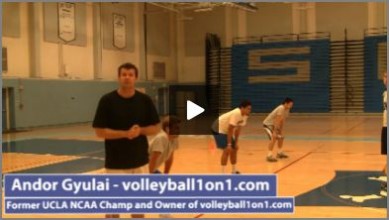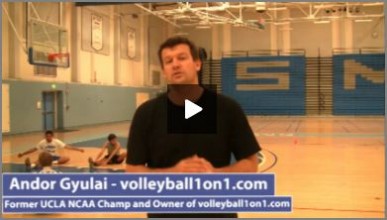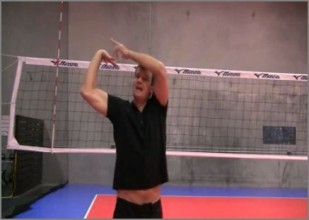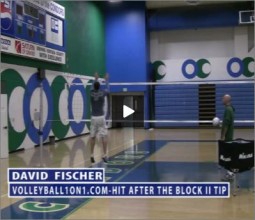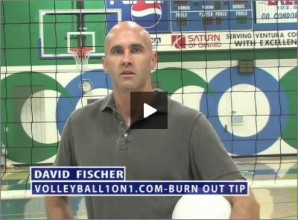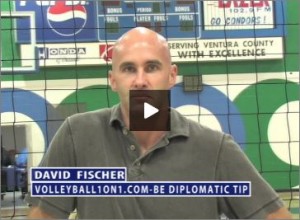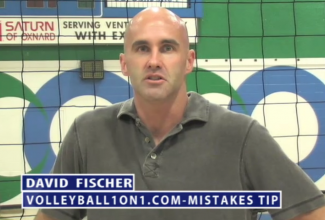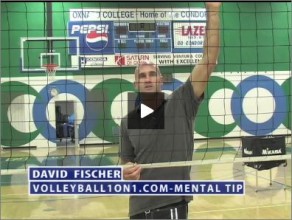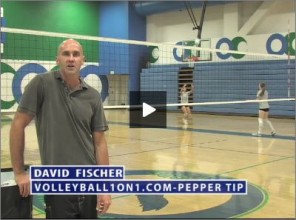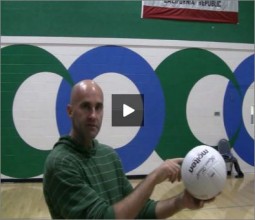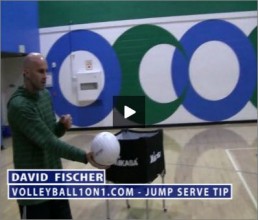#1 Instructional volleyball coaching website in the world
Gary knows first hand height does not affect the defensive part of the game. This video series discusses the fundamentals to playing defense in various positions. It culminates with what a defenders mindset needs to be.
1. The stance begins in an athletic position with arms out in a neutral place and relaxed.
Blocking in volleyball has evolved as the speed of the game continues to increase. Gold medal coach Gary Sato presents the basics of how to block effectively.
1. Thirds is the basic building blocks of blocking. Each front row player is assigned a specific section of the net.
Over the years Gary has developed a structured system of scouting the opponent’s tendencies exposing their strengths and weaknesses. Gary presents in this series tactics used to win Olympic gold and bronze medals.
1. The chart is set up by entering the numbers of the opponents players. Then each players tendencies can be marked.
Gary shows how when a middle quick set slightly changes its location the hitter is open to get a kill.
Protecting a server means letting the best server go for an ace and be allowed to miss. The other servers must be more conservative and get their serves in. Gary talks how this is applied when he coaches in the Olympics.
Filming yourself is the best way to improve a players strengths and work on their weaknesses. Gary talks about the best way for players to film themselves.
The overhand dig allows players to cover a larger area of the court. Olympic gold medal coach Gary Sato explains how this move from the beach is applied to the indoor court.
Gary gives specific examples of how fast the game has become. Because of it blockers have to improve one on one and defenders must be more active. To view all of Gary Sato’s videos – Click Here!
The game has continually changed as the speed of the game increases. Gary compares how the game was played when he first started and why players and coaches always need to be studying the game.
The libero position was created in part because of Gary’s little brother Eric, who won gold in the 1988 Olympics. Gary tells how the position is used.
Gary shares the difference between an overhand pass and a regular set. Primarily how the jump float serve requires an overhand pass.
Demonstrated is how a typical 3-1 or gap set can be used as a decoy for a slight variation. Olympic gold medal coach Gary Sato compares and contrasts the differences.
As a licensed chiropractor Gary demonstrates several lower back stretches that keep players healthy and playing longer. These stretches are the same ones used by Olympic athletes.
1. By stretching the hamstrings they release easier and allow the body to bend at the waist farther.
This drill offers a rare chance for caoches to witness one of the greatest coaches in the world coach youth players. Gary Sato is head coach for Japan Men’s Volleyball, on top of this he is Olympic Gold and Bronze Medal Coach. In this series of instructional videos Gary is coaching his daughters club volleyball team.
This series of videos features a youth over the net pepper multi skill volleyball drill with progressions by Gary Sato. This drill is great for beginner and youth players as it is easy to run but yet get all the players involved and learning the fundamental skills of the sport.
This video series contains the final sequence of volleyball drills with Gary Sato coaching a Juniors Volleyball Practice with his daughter. In this series you will see how Gary ties everything together that he has taught the girls thus far and puts it into action with a real live game.
This series of drills is designed to improve volleyball passing and hitting as a team. These team volleyball passing drills are also progression drills meaning they build on each other. This means that skills and technique are improved more rapidly and players see results faster. These drills specifically focus on out side hitters!
In this video I share some quick tips for making volleyball pepper drill better in practice.
Andor Gyulai is the instructor for this volleyball practice plan focused on passing. He has over 20 experience playing and coaching.
This part of the practice plan is on team play and getting the team to have some fun and compete! I always suggest ending practice with playing and competition.
This part of the practice contains early season team drills designed to improve volleyball passing and hitting as a team. These team volleyball passing drills are also progression drills meaning they build on each other. This means that skills and technique are improved more rapidly and players see results faster. These drills specifically focus on out side hitters!
Our Instructor Andor Gyulai has the most popular video in the world on “Volleyball Spiking.” Additionally he has coached, at all level including running his own club of 8 teams. He is also the owner and founder of Volleyball1on1.
In this portion of the practice plan we are focused on building strong fundamentals using high rep drills
This portion of the practice plan focuses on teaching good volleyball passing technique as well as a very useful drill that forces high repetition and ball contact to improve skill. The complete drill takes 5-10 minutes total to run however the result is 160-320 volleyball passing contacts for each player while stressing correct movement and form.
Andor Gyulai is the instructor for this practice. Andor is an NCAA Champion from UCLA, he started playing volleyball at age 14 and started coaching at the age of 16 when he started coaching his high school team in South Africa. With close to 20 years experience, he has coached as many as 8 different teams in one year
There are few skills in the sport of volleyball as much fun as volleyball spiking. In this series of videos Andor Gyulai will explain what it takes to have perfect technique and form when hitting a volleyball. This series of videos on the subject are the most popular videos in the world on learning volleyball spiking and hitting technique.
Transitioning off of the block and to the hit is integral to every teams success. Pro player and twelve year coach David Fischer presents a complete series with drills on this topic.
Demonstration of a drill to perfect the footwork and improve conditioning.The right side of the court uses a slightly different footwork to move from blocker to hitter.
Learn to keep the game fun and avoid burnout with twelve year coach David Fischers advice on how to keep burnout on the back burner.
Twelve year coach David Fischer hands out terrific advice on how to be diplomatic as players interact with their current and future teammates.
Mistakes make the difference between good and great players and teams. Shared here are the most common ones and how to correct them with David Fischer, pro player and twelve year volleyball coach.
Mental processing for outside hitters mean they have to think like more than just a hitter. Twelve year coach David Fischer shares these positions and hitting strategies.
epper is made more engaging, intense and active for the players with this tip from twelve year coach David Fischer.
Giving a full demonstration of the jump float serve and explaining its effectiveness in women’s and girls’ volleyball is twelve year coach.
A miniscule difference is using the valve on the ball to direct its direction on court. Demonstration is to use the classic 3 step approach serve at the passer’s nose to throw off their depth perception.
David Fischer demonstrates how to execute and successfully use a powerful jump serve for beginners and pros. Beginners learn and pros can review the basics and fundamentals of how to toss and approach the ball. Think like a hitter when jump serving by progressing from the ten foot line and backing up to the end line.

